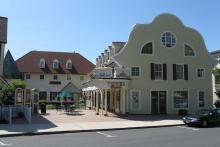South Hadley FTTH Deployment Progressing in Massachusetts
By this July, the South Hadley Electric Light Department (SHELD) expects to begin serving the the first subscribers to Fibersonic, the town’s municipal Fiber-to-the-Home (FTTH) network. Construction, which began in January, is rolling along and SHELD anticipates the citywide project will be completed within four years.
Showing Their Interest
SHELD is signing up subscribers now on the Fibersonic website. Residents who express the desire for the service will also help SHELD see which of the town’s 32 fiberhoods are more likely to gather more subscribers at a rapid rate and can help determine which areas are connected first. The first two areas where construction crews are working are the Ridge Road and Old Lyman Road areas. Each fiberhood will serve approximately 250 to 300 subscribers.
Check out the Fibersonic map, which SHELD will keep updated for the community, to see where construction occurs.
Sean Fitzgerald, who came to SHELD from Westfield Gas + Electric (WG+E), says that the intense interest from the South Hadley public reflects the lack of competition in town. Comcast offers Internet access in South Hadley, along with cable TV and voice services.
“There’s a tremendous amount of interest. Customers are giving us a lot of positive feedback. There’re very hungry to have competition, to have options,” Fitzgerald said, “a chance to pick from different vendors versus having to choose one.”
SHELD offers one level of service: symmetrical gigabit connectivity for $74.95 per month. If subscribers enroll in autopay, the monthly rate drops to $70 per month. There’s no installation fee and the municipal utility offers a seasonal discount for subscribers who will be away from their homes for three to six months.



